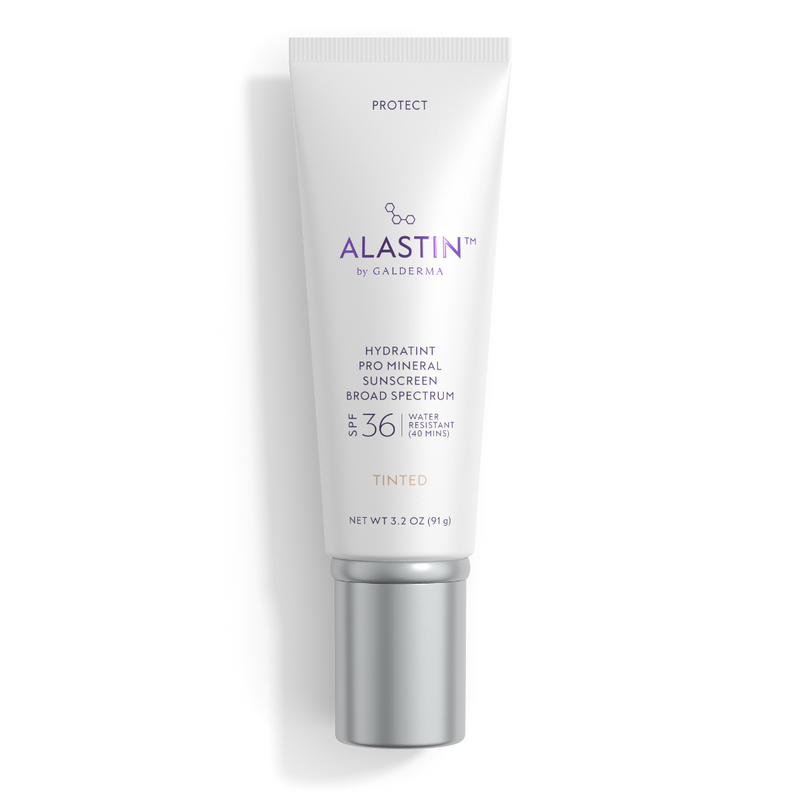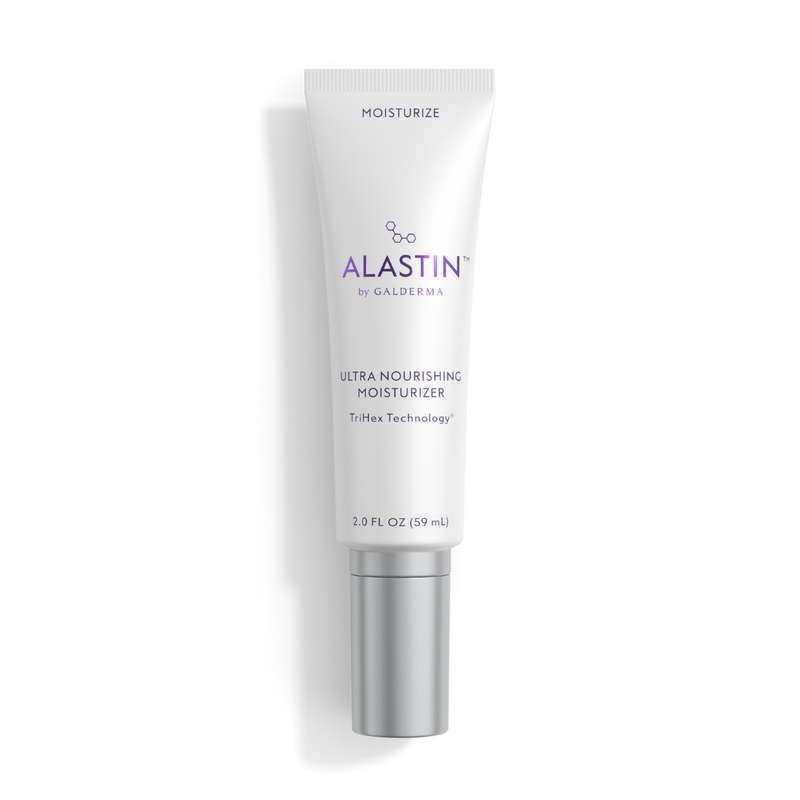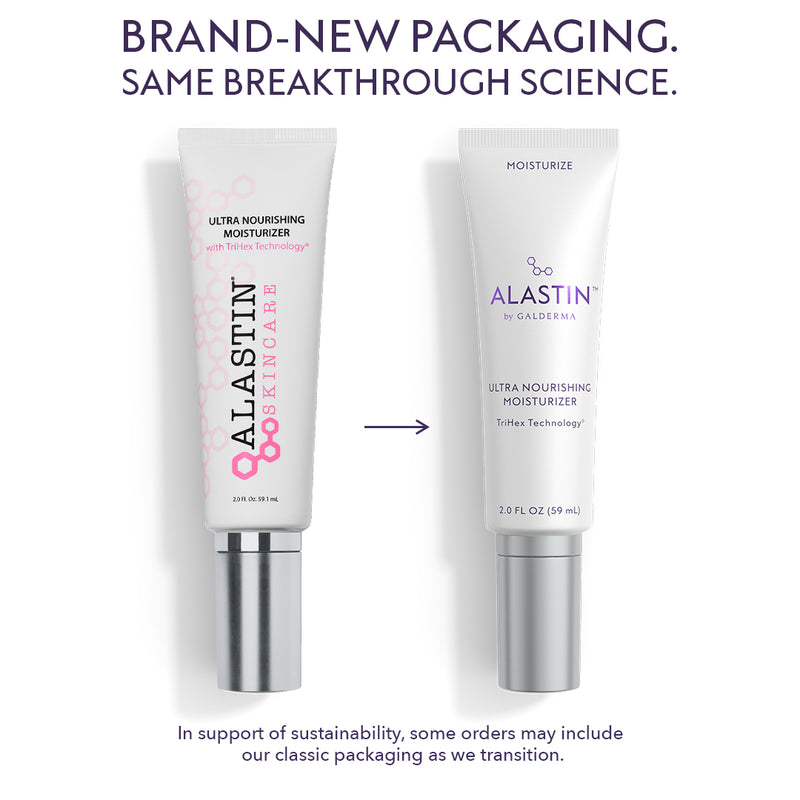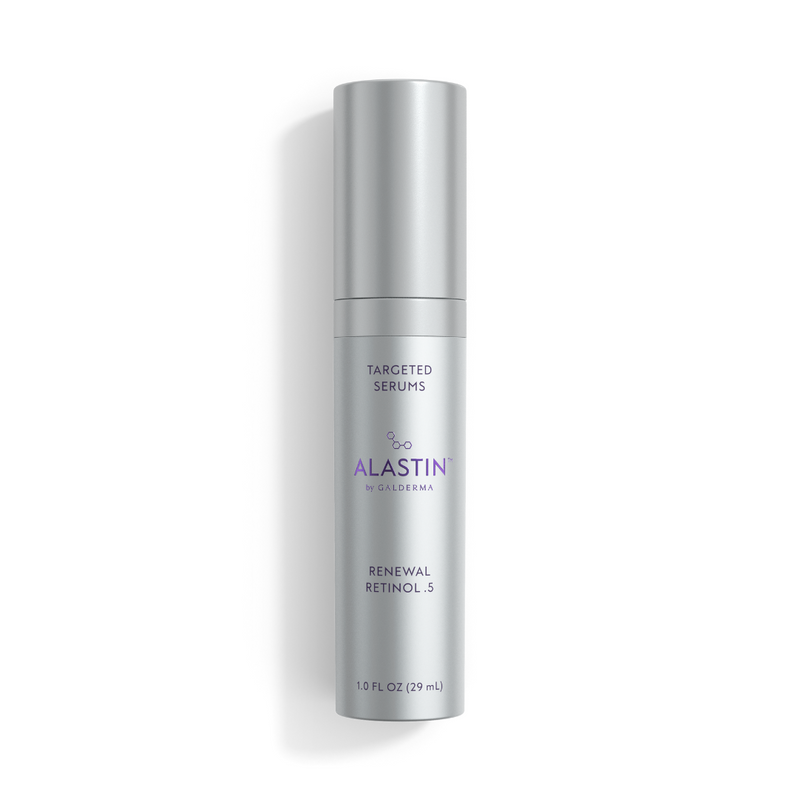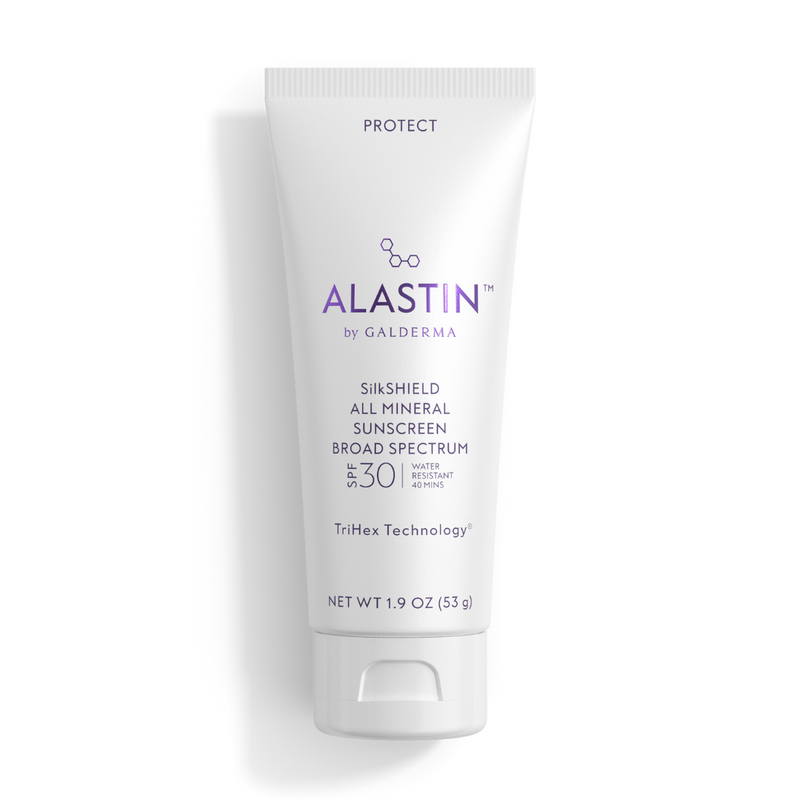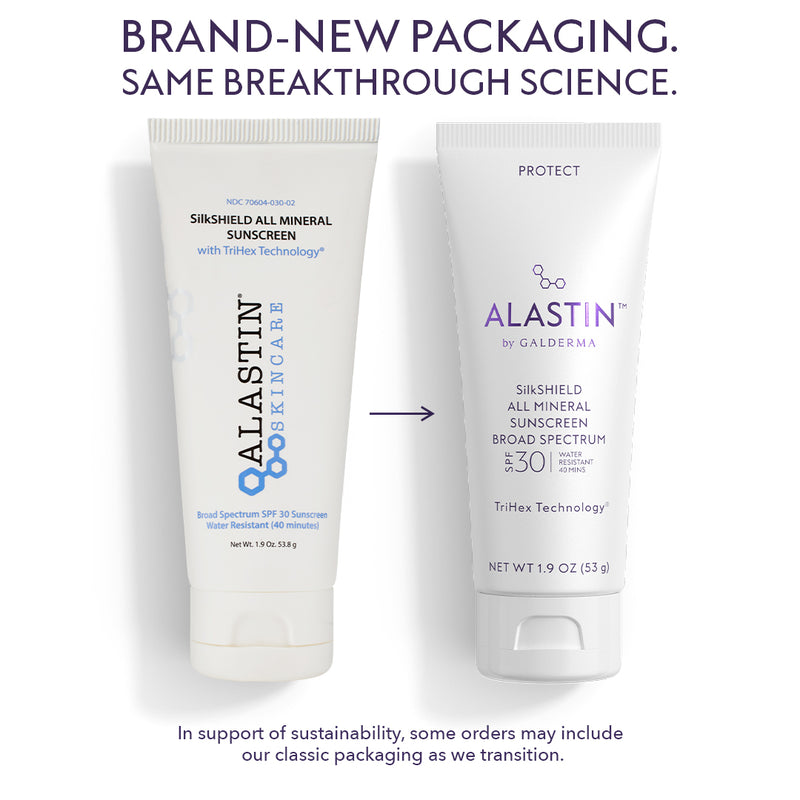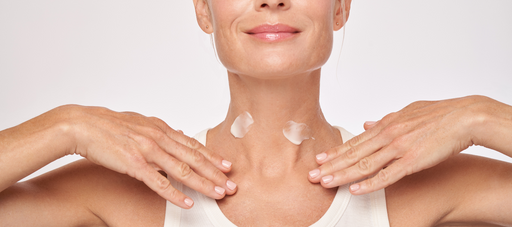You have no items in your bag
What Causes Thin Skin and How to Treat It

Thin Skin Quick Links:
- What Causes Skin to Become Thin and Tear Easily?
- What Vitamin Are You Lacking When You Bruise Easily?
- How to Treat Thin Skin
When it comes to aging as a woman, it turns out that menopause doesn’t really pause anything.
Say hello to hot flashes, chills, night sweats, and, worst of all, thin skin.
You’re probably thinking: You have got to be kidding me.
Unfortunately, we are not kidding. But we get it—on a sweaty, sleepless, visceral level. Women go through way too much in their lives to then have to deal with fragile, crepey skin.
But chin up! No matter your age or skin thickness, this guide is here to help you understand thinning skin. Read on to find out what causes thin skin and how to treat it to help promote skin health.
What is Thin Skin?
Does your skin tear or bruise easily, even with the slightest bump or scratch? Can you see your veins, or even your bonds and tendons, right through your sensitive skin?
Then you most likely have thin skin. But that’s ok! Fortunately, there are various ways you can strengthen and protect your skin, even as you age.

A Note on Crepey Skin
Thin skin is slightly different from crepey skin, which is wrinkly and hangs loose in bunches around the face and knees. For more information on what causes this condition and how to treat it, check out our blog post on crepey skin.
Okay, now onto the good stuff.
Skin Layers
Each of your skin’s layers serves a different role in protecting your body and helping it function. To understand what causes thin skin and how to treat it, you first have to grasp your biggest organ's inner workings.
Here’s the breakdown:
- Epidermis (top layer) – The epidermis guards you against nasty intruders like viruses, bacteria, and dirt, while also maintaining your skin’s moisture and pigment1.
- Dermis (middle layer) – This middle layer is composed of hair follicles, sweat glands, nerves, tissue, and blood supply.
- Hypodermis (bottom layer) – This layer contains all the underlying fat and tissue that keeps your skin beautiful and even, acting as a cushion while the top layers do all the hard work.
Thin skin occurs when your skin’s three layers go through the following changes:
- The capillaries near the epidermis become more fragile, causing bruising. This layer also becomes more dry and transparent as skin loses pigment, and the cells in this area begin shrinking2.
- The elastic fibers and collagen in the dermis weaken and attenuate due to sun damage.
- The fat in the hypodermis thins, flattens and becomes uneven.
What Causes Skin to Become Thin and Tear Easily?
It’s never too late to start taking good care of your largest organ. To learn how to mitigate thin skin, you first have to understand why it happens.
Here are the main causes of thin, fragile skin:
- Aging – Thin skin is a perfectly natural result of aging skin and is common among older adults. Over time, your body simply produces less of all the good stuff: collagen, elastin, oil, etc. Aging can also cause crow’s feet but we share how to get rid of crow’s feet in another blog. You can still prevent or improve its condition through protective measures, and a quality skincare routine meant to handle skin changes.
- Genetics – While your genetics play a small role in your skin’s natural elasticity and thickness, good skincare and healthy practices help put you on an even playing field with winners of the genetic skin lottery.
- Sun Exposure – Continual exposure to UV light from the sun gradually degrades the collagen and elastin in your skin. Both play a pivotal role in your skin’s healing ability, elasticity, and thickness.
- Smoking and Pollution – Damaging toxins and smoke hurt not only your lungs, but also your skin. They expose your skin to free radicals, which attack elastin fibers, resulting in loose, thin skin.
- Menopause – Menopause and perimenopause result in lower estrogen production2, which contributes to thinner, aged-looking skin.
- Medication – While topical corticosteroids are useful for reducing inflammation and asthma, long-term use can weaken blood vessels under the skin3, resulting in skin that tears and bruises easily. Aspirin, antibiotics, and anticoagulants can also lead to easy bruising2. Consult your physician before switching or discontinuing medications.
In a nutshell, thin skin is caused primarily by damage to elastin and collagen reduction through aging and sun damage. The good news is both components can be repaired with conscientious effort and the right products.
What Vitamin Are You Lacking When You Bruise Easily?
If you’re particularly concerned with rapid bruising on your skin, especially if it takes longer to heal, fear not—your culprit might just be a vitamin deficiency.

Vitamin C has shown to affect collagen production, and a lack thereof could cause easy bruising with longer healing times. Taking a Vitamin C supplement may help keep your body from bruising. A topical serum with arnica and active peptides can also aid in helping bruises heal.
How to Treat Thin Skin
There are two main ways to tackle your paper-thin predicament:
- Prevention and protection.
- Thickening through medical intervention or medical-grade skincare products.
While treatment for thin skin through prevention is ideal, you should never give up on your skin if it’s already thin or weak. All hope is not lost—it just might take a bit more effort to reverse the damage.
#1: How to Prevent Skin from Becoming Thinner
Whether you’re protecting your skin or trying to prevent further damage, here are the primary ways you can slow down age-related skin symptoms, preserve your youthful glow, and promote healthy skin:
-
Wear Sunscreen – Avoid this toxic friendship with UV rays by slathering on a nice tinted sunscreen with SPF 30 or higher4, reapplying around every two hours. Avoid prolonged exposure and reapply even more often if you’re swimming or sweating.

- Cover Up – Whether you’re chic or casual, covering up is always in style—sport long pants, long sleeves, and a wide-brimmed hat for good measure. Wear gloves when driving and double up your layers when working outside.
- Enjoy the Shade – Try to coordinate your schedule so you’re spending the hottest hours of the day indoors or in the shade.
- Implement a Daily Skin Regimen – No matter what your age is, moisturizing and daily skincare is key. Give each part of your body the care it deserves by using specialty products for each type of skin texture you have, like in your face, body, and neck and chest areas. If you use face masks, make sure that they are gentle on your skin and don’t give you face mask acne.
- Eat Healthy – A nutrient-dense diet with plenty of vitamins and minerals can do wonders for your skin thickness and elasticity—plus, the rest of your body won’t mind either.
#2: Can Thin Skin Be Thickened?
The short answer: yes, skin can be thickened.
While you can’t entirely reverse the process of skin thinning, there are ways to increase collagen, repair elastin, and improve your skin’s overall appearance. The most important thing to do, however, is continue to prevent your skin from becoming even thinner by following the tips mentioned above.
For skin thickening, here are your options:

A Note on Safety
Always consult an expert before undergoing any laser or chemical treatment, surgery, or even oral supplement routine. Before jumping on a solution, call your healthcare provider for a specific course of action.
Choose ALASTIN for Healthy Skin
When it comes to your skin, we care. Whether you are looking for a daily skincare regimen or specific anti-aging or postoperative products, we offer a comprehensive line of top-notch medical-grade skincare products.
Now that you know what to do for thin skin, check out our tips for the ideal skin care routine order to get you started on your skincare journey.
Sources:
- Epiphany Dermatology. How to Thicken Your Skin: Causes & Treatments for Thin Skin. https://www.epiphanydermatology.com/blog/how-to-thicken-your-skin-causes-treatments-for-thin-skin/
- Next Avenue. What to Know About Thinning Skin and Easy Bruising Skin. https://www.nextavenue.org/thinning-skin-bruising-skin/
- Mayo Clinic. Healthy Aging. https://www.mayoclinic.org/healthy-lifestyle/healthy-aging/expert-answers/thin-skin/faq-20057753
- Compassion Dermatology. All You Need to Know About Thin Skin and How to Manage It. https://compassiondermatology.com/blog/all-you-need-to-know-about-thin-skin-and-how-to-manage-it-dermatologist-in-keller-tx/

$84.00
$98.00
$78.00



